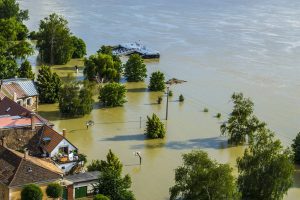“Rebuild with Confidence: 5 Essential Steps for Flood Recovery Renovations!”
Introduction
Flooding can be a devastating event for homeowners, leaving behind costly damage and disruption. Fortunately, there are steps you can take to help with the recovery process. Here are five renovation tips to help you get your home back to its pre-flood condition. From assessing the damage to choosing the right materials, these tips will help you make the most of your flood recovery efforts.
How to Prepare Your Home for Flood Recovery: What to Do Before and After

Floods can cause extensive damage to homes and property, and the recovery process can be overwhelming. To ensure that your home is properly prepared for flood recovery, it is important to take the necessary steps before and after a flood.
Before a Flood
The best way to prepare for a flood is to take preventive measures. Make sure that your home is properly sealed and that all windows and doors are closed and locked. Check your roof for any signs of damage or leaks, and repair any issues as soon as possible. If you live in an area prone to flooding, consider installing flood barriers or sandbags around your home.
It is also important to create an emergency plan. Make sure that everyone in your household knows what to do in the event of a flood. Have a designated meeting place and make sure that everyone knows how to contact each other in case of an emergency.
After a Flood
Once the floodwaters have receded, it is important to take immediate action to begin the recovery process. The first step is to assess the damage and make sure that your home is safe to enter. If there is any structural damage, contact a professional to assess the situation and make any necessary repairs.
Once the home is safe to enter, it is important to begin the cleanup process. Remove any standing water and debris, and use fans and dehumidifiers to dry out the area. Make sure to wear protective clothing and use gloves when handling any wet materials.
It is also important to document the damage for insurance purposes. Take photos of the damage and make a list of any items that were damaged or destroyed.
Finally, contact your insurance company to file a claim. Make sure to provide all of the necessary documentation and follow their instructions for filing a claim.
By taking the necessary steps before and after a flood, you can ensure that your home is properly prepared for flood recovery. Taking preventive measures and documenting the damage can help make the recovery process easier and ensure that you get the compensation you deserve.
How to Choose the Right Contractor for Flood Recovery Renovations
When it comes to flood recovery renovations, it is important to choose the right contractor for the job. The right contractor can make all the difference in the quality of the work and the speed of the project. Here are some tips to help you choose the right contractor for your flood recovery renovations.
First, do your research. Look for contractors who specialize in flood recovery renovations and have experience in the type of work you need done. Ask for references and check their online reviews. Make sure the contractor is licensed and insured.
Second, get multiple bids. Ask each contractor to provide a detailed estimate of the cost of the project. Compare the bids and make sure they are all for the same scope of work.
Third, ask questions. Make sure the contractor understands your needs and can provide the services you require. Ask about their experience with flood recovery renovations and how they plan to complete the project.
Fourth, consider the timeline. Ask the contractor how long the project will take and if they can meet your timeline. Make sure the contractor is willing to work with you to ensure the project is completed on time.
Finally, trust your gut. If you feel uncomfortable with a contractor, don’t hire them. It is important to find a contractor you can trust and who will do a good job.
By following these tips, you can ensure you choose the right contractor for your flood recovery renovations. Doing your research and asking the right questions can help you find a contractor who is experienced, reliable, and trustworthy.
The Benefits of Investing in Flood-Proof Materials for Your Home
Investing in flood-proof materials for your home is a wise decision that can provide numerous benefits. Floods can cause extensive damage to homes, and the cost of repairs can be significant. By investing in flood-proof materials, homeowners can protect their homes from the devastating effects of flooding and save money in the long run.
One of the primary benefits of investing in flood-proof materials is that it can help to reduce the risk of flooding damage. Flood-proof materials are designed to be resistant to water, and they can help to keep water out of the home. This can help to minimize the amount of damage that flooding can cause. Additionally, these materials can help to reduce the risk of mold and mildew growth, which can be a major problem in homes that have been flooded.
Another benefit of investing in flood-proof materials is that it can help to reduce the cost of repairs. Floods can cause extensive damage to homes, and the cost of repairs can be significant. By investing in flood-proof materials, homeowners can reduce the amount of damage that flooding can cause, and this can help to reduce the cost of repairs. Additionally, these materials can help to reduce the amount of time that it takes to repair the damage, which can also help to reduce the cost of repairs.
Finally, investing in flood-proof materials can help to increase the value of a home. Homes that are protected from flooding are more attractive to potential buyers, and this can help to increase the value of the home. Additionally, these materials can help to reduce the risk of flooding in the future, which can also help to increase the value of the home.
In conclusion, investing in flood-proof materials for your home is a wise decision that can provide numerous benefits. These materials can help to reduce the risk of flooding damage, reduce the cost of repairs, and increase the value of the home. For these reasons, investing in flood-proof materials is a smart choice for any homeowner.
How to Create a Flood Recovery Plan for Your Home
Creating a flood recovery plan for your home is an important step in protecting your family and property from the devastating effects of flooding. A well-crafted plan can help you prepare for and respond to a flood, minimize damage, and get your home back to normal as quickly as possible. Here are some tips for creating a comprehensive flood recovery plan for your home.
1. Assess the Risk: The first step in creating a flood recovery plan is to assess the risk of flooding in your area. Research the history of flooding in your area and consider the potential for future flooding. Consider the type of flooding that could occur, such as river flooding, coastal flooding, or flash flooding.
2. Develop a Response Plan: Once you have assessed the risk of flooding in your area, develop a response plan. This plan should include steps for preparing for a flood, such as securing important documents, moving furniture and other items to higher ground, and stocking up on emergency supplies. It should also include steps for responding to a flood, such as evacuating the home, turning off utilities, and contacting your insurance company.
3. Create an Emergency Kit: An emergency kit is an essential part of any flood recovery plan. This kit should include items such as flashlights, batteries, a first aid kit, non-perishable food, water, and any other items you may need in the event of a flood.
4. Make a List of Contacts: Make a list of contacts that you can call in the event of a flood. This list should include your insurance company, local emergency services, and any other contacts that may be able to help you in the event of a flood.
5. Develop a Cleanup Plan: Once the floodwaters have receded, you will need to develop a plan for cleaning up and restoring your home. This plan should include steps for assessing the damage, removing debris, and restoring your home to its pre-flood condition.
Creating a flood recovery plan for your home is an important step in protecting your family and property from the devastating effects of flooding. By following these tips, you can create a comprehensive plan that will help you prepare for and respond to a flood, minimize damage, and get your home back to normal as quickly as possible.
The Pros and Cons of DIY Flood Recovery Renovations
DIY flood recovery renovations can be a great way to save money and get the job done quickly, but there are also some potential drawbacks to consider. This article will discuss the pros and cons of DIY flood recovery renovations so that you can make an informed decision about whether or not this is the right approach for your situation.
Pros
Cost Savings: One of the biggest advantages of DIY flood recovery renovations is the potential for significant cost savings. By doing the work yourself, you can avoid paying for labor costs and potentially save money on materials as well. This can be especially beneficial if you are on a tight budget.
Time Savings: Another benefit of DIY flood recovery renovations is the potential for time savings. By doing the work yourself, you can get the job done much faster than if you were to hire a contractor. This can be especially beneficial if you are in a rush to get the job done.
Knowledge: Doing the work yourself can also give you a better understanding of the process and the materials used. This can be beneficial if you plan on doing more renovations in the future, as you will have a better understanding of what is involved.
Cons
Risk of Injury: One of the biggest drawbacks of DIY flood recovery renovations is the potential for injury. If you are not experienced in this type of work, you may not be aware of the potential risks involved. This can lead to serious injury or even death if you are not careful.
Time Consuming: Another potential downside of DIY flood recovery renovations is that it can be very time consuming. If you are not experienced in this type of work, it can take a long time to complete the job. This can be especially true if you are working on a large project.
Cost Overruns: Finally, there is the potential for cost overruns when doing DIY flood recovery renovations. If you are not experienced in this type of work, you may not be aware of the potential costs involved. This can lead to unexpected expenses that can quickly add up.
In conclusion, DIY flood recovery renovations can be a great way to save money and get the job done quickly, but there are also some potential drawbacks to consider. Be sure to weigh the pros and cons carefully before deciding if this is the right approach for your situation.
Conclusion
Flood recovery can be a daunting task, but with the right preparation and knowledge, it can be a manageable process. By following these five renovation tips, you can ensure that your home is restored to its pre-flood condition and that you are able to move forward with your life. With the right planning and preparation, you can make sure that your home is safe and secure for years to come.






